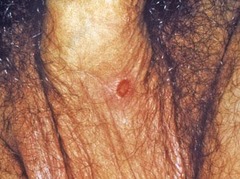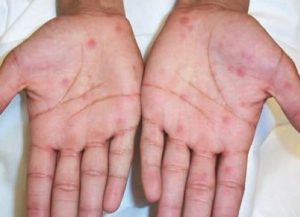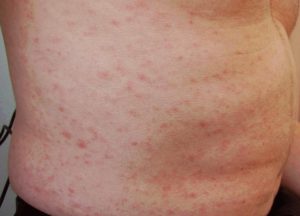You should be aware that syphilis has been on the rise since 2011. This table borrowed from the CDC illustrates how the cases of syphilis in major metropolitan areas have increased from 2011 to 2015. Take a look at Atlanta metro, for instance. In 2011, there were 1,549 cases of syphilis, and in 2015, the number of cases had more than doubled in only four years to 3,105. Unfortunately, these numbers are expected to grow in 2016 as well.
What is Syphilis?
Syphilis is a sexually transmitted infection caused by the bacteria Treponema palladium.
How do you get it?
Syphilis is transmitted by direct contact with a syphilis sore, which can be on a person’s genitals, anus, rectum, or even in the mouth or on the lips. The sores can appear on areas of the genitals not covered by a condom, so it is possible to still get syphilis despite using condom.
What are the signs and symptoms?
Some people will not have any symptoms OR their symptoms will be mild or mimic symptoms associated with other medical conditions. Some will notice a small painless sore that pops up on their penis or anus, while others will think it’s an ingrown hair or “just a bump.” This is the primary stage of syphilis.
During the secondary stage of syphilis, some people will develop a non-itchy rash all over their body, or most commonly, on the palms of their hands or the soles of their feet. This is not always the case, as we have seen the rash appear in a just few places or only on the chest and stomach.
How often should I get tested?
Since the symptoms of syphilis can be so vague or even not apparent at all, it is important to get tested routinely every 3 months if you are sexually active. If you notice a painless sore on your genitals or anus or develop a non-itchy rash anywhere on your body, then you should make an appointment to be seen by your medical provider for an evaluation.
Here are a few pictures of a typical syphilis sore and syphilis rash:
Syphilis lesion on base of penis:

How is it treated?
It’s important that syphilis is treated promptly and sufficiently with antibiotics to ensure it does not advance and cause long-term complications. Your provider will continue to monitor the level of antibodies to syphilis in your blood to make sure that treatment has worked and that you have not been re-exposed. You will often hear this level referred to as the “RPR” or “Syphilis titer.”


